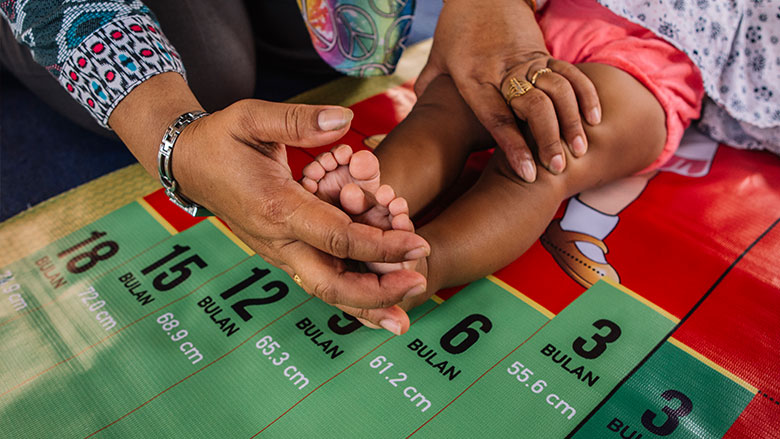Lombok, Indonesia, June 26, 2018 – Salmiah thought she had learned all that she needed to know about raising a healthy child, being a community health worker in Batukliang, Central Lombok, since 2000. But the mother of three was devastated when she found out that her 2-year-old daughter had not grown normally.
“Due to lack of healthy food during my pregnancy, my daughter was born underweight and at the age of 2 she was stunted,” says Salmiah, who also works as a teacher at an Islamic elementary school.
Stunting prevention: a national commitment
Stunting – the failure to reach one’s potential for growth – is caused by chronic malnutrition and repeated illness during childhood. It can permanently limit a child’s physical and cognitive capacity and cause livelong damage. Globally, nearly a quarter of children under 5 are malnourished.
Indonesia’s stunting rates are staggering. In 2013, 37% of Indonesian children under the age of 5, or almost 9 million children, were stunted, according to the National Health Survey.
In 2017, Indonesian Vice President Jusuf Kalla called for a National Strategy to Accelerate Stunting Prevention. The strategy, supported by the World Bank, was built on Indonesia’s experience and global lessons, particularly Peru’s success cutting its stunting rate by half in just seven years.
“Stunting among children under the age of 5 is a reflection of Indonesia’s future,” said Sri Mulyani Indrawati, Minister of Finance. “The issue is now a government priority.”
Indonesia’s national commitment to reduce stunting entails stronger collaboration among many stakeholders, say officials.
“Stunting must be tackled together,” said Nila Moloek, Minister of Health. “There should be better collaboration between government agencies at the national and regional level. Also with the private sector, civil society and academics.”

